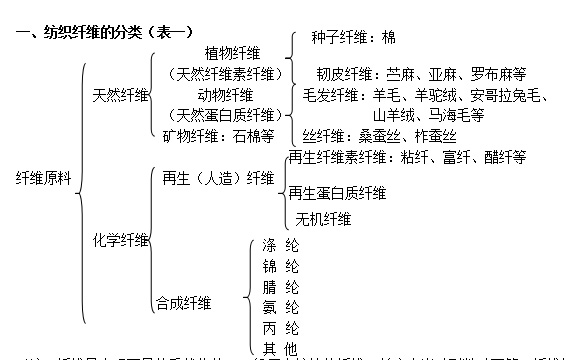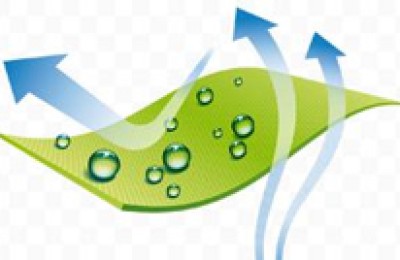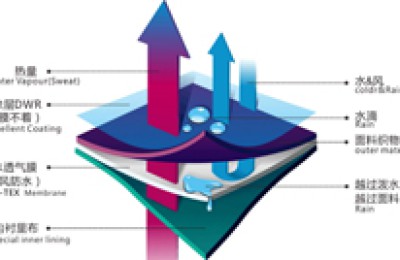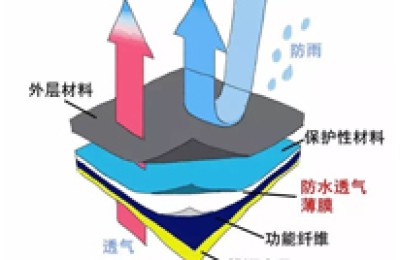Classification of textile fibers
Classification of textile fibers

(Note: Fiber is a hairy object visible to the naked eye. The length of fiber is generally used for spinning, ranging from half an inch to several inches. After the fiber is spun into yarn, it can be used to weave various types of fabrics into clothing, or Other uses, such as curtains, bed sheets, etc.)
1. Natural fiber – refers to the fiber taken from plant seeds (cotton COTTON) stems (hemp LINEN) and animal bodies (wool WOOL, silk SILK). It is a type of fiber material that humans obtain directly from nature.
There are three types of natural fibers: plant fibers (natural cellulose fibers), animal fibers (natural protein fibers), and mineral fibers (asbestos)
Plant fiber is divided into seed fiber and bast fiber
Seed fiber – cotton
(Taken from cotton and kapok seeds, naturally curly, thin and short fibers, moisture absorption and heat preservation, good alkali resistance)
Mercerized cotton: refers to high-count cotton fabrics that have been treated with high-concentration alkali sanding and then treated with high-quality softeners. After treatment, they have a bright luster like silk. It not only has the breathability, softness and hygroscopicity of cotton, but also has the smoothness of silk. Bright features, smooth and comfortable to wear, with high grade color fastness and good feel. Single mercerization means one light treatment, double mercerization means two mercerization treatments, the effect is better
Long-staple cotton: It has excellent moisture absorption and perspiration, protects the skin, has good coloring, good strength, and good stretchability. It has soft hand feel, soft luster, simplicity, and good warmth retention.
Bast fiber – linen
Hemp is a kind of plant fiber, known as a cool and noble fiber. It has good hygroscopicity, releases moisture quickly, is not easy to generate static electricity, quickly dissipates heat, is cool to wear, does not stick to the body after sweating, and is washable and heat-resistant.
There are two types of hemp: ramie and flax:
Ramie: Harvested three times a year, it has good quality, is breathable, does not stick to the body, feels crisp, and has uneven cloth thickness
Flax: Harvested once a year, it has excellent moisture absorption and release properties, antistatic, anti-ultraviolet, antibacterial and non-contaminating
Animal fibers are divided into hair fibers and silk fibers
Hair fibers – wool (sheep/goat), alpaca, angora, cashmere, mohair, rabbit hair, etc.
The characteristics of hair are equivalent to the bladder of a thermos bottle, with good heat preservation and insulation properties
At present, the animal hair fibers used in wool fabrics on the market generally include sheep wool, goat hair, camel wool and rabbit hair.
Sheep wool: Sweaters, woolen fabrics, felts, etc. that people use in large quantities daily are mainly sheep wool that grows densely on sheep. In the knitting industry, due to the large amount of sheep wool, “wool” has become the abbreviation of sheep wool.
The countries that produce more sheep wool are Australia, the CIS, New Zealand, Argentina and China. The count and grade of wool are the basis for evaluating the grade and quality of wool. The higher the count, the better the quality. The higher the grade, the worse the quality.
Goat hair: Goat hair refers to the coarse and dead hair cut from goat hair. Generally, the fine hair on goat hair is very short and cannot be spun, and the coarse hair is only
Can make writing brushes, brushes, etc.
Rabbit fur: Rabbit fur is popular for its lightness, fineness, softness, strong warmth retention and low price. It is composed of fine and soft fluff and coarse hair,
There are mainly ordinary rabbit and Angora rabbit fur, with the latter having the best quality. The difference between rabbit hair and wool is that the fiber is slender and the surface is particularly smooth, making it easy to identify. Because rabbit hair has low strength and is difficult to spin alone, it is often blended with wool or other fibers to make knitwear, women’s woolen coats and other clothing fabrics.
Camel plush: lighter in color, weak in luster, smooth to the touch, good in elasticity and strength, good in warmth, and good in wear resistance.
100% Merino superfine wool: Smooth and flat surface, anti-pilling, peeled to reduce felt shrinkage, low shrinkage, no deformation after machine washing, good gloss, excellent elasticity, good warmth retention, plump hand feel , soft and comfortable, suitable for close-fitting wear.
Identify cashmere, alpaca, and mohair
Cashmere: Cashmere is the bottom layer of fine hair from goats. It is light in texture and very warm. It is a unique and rare animal fiber. It is known as “fiber diamond” and “soft gold” abroad. It has better stretch and elasticity than wool. It has the characteristics of soft, slender, smooth, thin, elastic and has a natural and soft color, good hygroscopicity and good wear resistance. Goats grow in alpine grasslands, such as Inner Mongolia, Xinjiang, Qinghai, Liaoning and other places in my country. Our country is the largest cashmere producer in the world, with cashmere output accounting for more than 1/2 of the total output, among which cashmere from Inner Mongolia is the top grade. Cashmere fiber is characterized by its fineness and softness. Its fabric feels soft, smooth and waxy, with a soft luster. It is much lighter than wool fabrics of the same thickness, and is mostly suede style. Generally speaking, light-colored cashmere coats are mostly made from white velvet and are of better quality; while dark-colored cashmere coats are mostly made from purple velvet or blue velvet and are of lower quality.
Alpaca wool (alpaca wool): comes from an animal called “alpaca” (also known as “albaca”), which mainly grows in the Andes Mountains of Peru. It has two varieties, one with curly fibers and a silver luster, and the other with straight fibers, less curl and a luster similar to mohair. They are often blended with other fibers and used as high-quality materials for making high-end clothing. AndesMake socks and ropes
Acrylic: Commonly known as “artificial wool”, its performance is very similar to wool, soft to the touch, warm, good elasticity, and light-resistant. But it is not durable, not wear-resistant, and has poor moisture absorption, so it is suitable for sportswear and parasols
Spandex: It has excellent elasticity, also known as elastic fiber, also known as Lycra. It has good elasticity, smooth feel, low hygroscopicity, good weather resistance and chemical resistance, machine washable, poor heat resistance
Polypropylene: It looks like plush silk or cotton, has a waxy feel and luster, has average elasticity and recovery, is not easy to wrinkle, has a small and light specific gravity, can transmit sweat faster to keep the skin comfortable, and has good strength and wear resistance. , durable, but not resistant to high temperatures, poor color fastness, and poor moisture absorption
*Vinylon: The fabric looks and feels like cotton, and its performance is close to cotton. It has good hygroscopicity, small specific gravity and thermal conductivity, is light and warm to wear, has high strength, good abrasion resistance, is strong and durable, and has excellent resistance to chemicals and sunlight. , but not heat-resistant and poorly dyed, mostly used in curtains and packaging bags
*Chloropropyl: flame retardant, low price, negative static electricity (has medical and health care effects), moisture resistance, acid and alkali resistance. Mostly used in carpets, chemical filter cloths, and work clothes
Disclaimer:
Disclaimer: Some of the texts, pictures, audios, and videos of some articles published on this site are from the Internet and do not represent the views of this site. The copyrights belong to the original authors. If you find that the information reproduced on this website infringes upon your rights, please contact us and we will change or delete it as soon as possible.
AA







